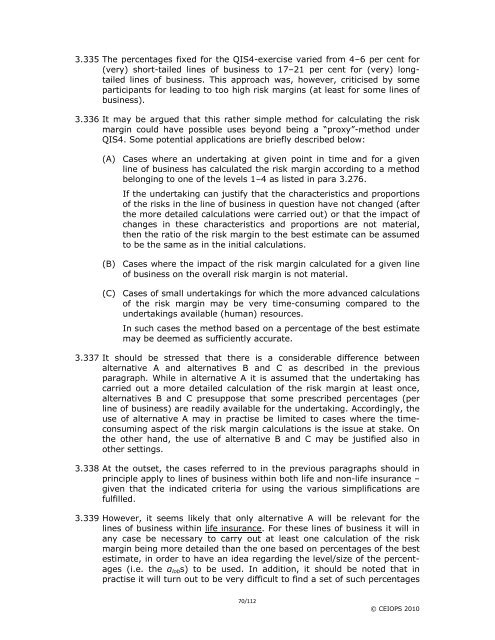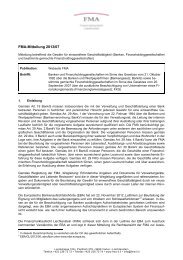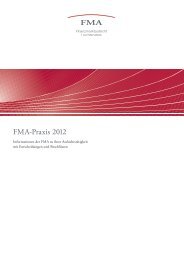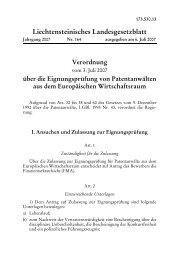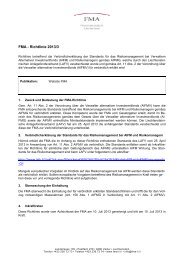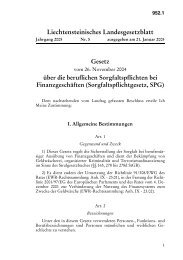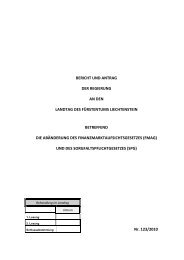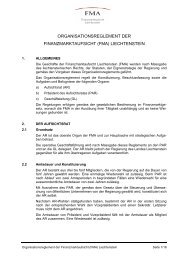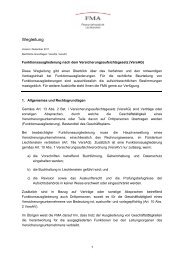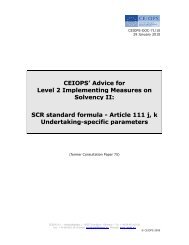CEIOPS' Advice for Level 2 Implementing ... - EIOPA - Europa
CEIOPS' Advice for Level 2 Implementing ... - EIOPA - Europa
CEIOPS' Advice for Level 2 Implementing ... - EIOPA - Europa
You also want an ePaper? Increase the reach of your titles
YUMPU automatically turns print PDFs into web optimized ePapers that Google loves.
3.335 The percentages fixed <strong>for</strong> the QIS4-exercise varied from 4–6 per cent <strong>for</strong><br />
(very) short-tailed lines of business to 17–21 per cent <strong>for</strong> (very) longtailed<br />
lines of business. This approach was, however, criticised by some<br />
participants <strong>for</strong> leading to too high risk margins (at least <strong>for</strong> some lines of<br />
business).<br />
3.336 It may be argued that this rather simple method <strong>for</strong> calculating the risk<br />
margin could have possible uses beyond being a “proxy”-method under<br />
QIS4. Some potential applications are briefly described below:<br />
(A) Cases where an undertaking at given point in time and <strong>for</strong> a given<br />
line of business has calculated the risk margin according to a method<br />
belonging to one of the levels 1–4 as listed in para 3.276.<br />
If the undertaking can justify that the characteristics and proportions<br />
of the risks in the line of business in question have not changed (after<br />
the more detailed calculations were carried out) or that the impact of<br />
changes in these characteristics and proportions are not material,<br />
then the ratio of the risk margin to the best estimate can be assumed<br />
to be the same as in the initial calculations.<br />
(B) Cases where the impact of the risk margin calculated <strong>for</strong> a given line<br />
of business on the overall risk margin is not material.<br />
(C) Cases of small undertakings <strong>for</strong> which the more advanced calculations<br />
of the risk margin may be very time-consuming compared to the<br />
undertakings available (human) resources.<br />
In such cases the method based on a percentage of the best estimate<br />
may be deemed as sufficiently accurate.<br />
3.337 It should be stressed that there is a considerable difference between<br />
alternative A and alternatives B and C as described in the previous<br />
paragraph. While in alternative A it is assumed that the undertaking has<br />
carried out a more detailed calculation of the risk margin at least once,<br />
alternatives B and C presuppose that some prescribed percentages (per<br />
line of business) are readily available <strong>for</strong> the undertaking. Accordingly, the<br />
use of alternative A may in practise be limited to cases where the timeconsuming<br />
aspect of the risk margin calculations is the issue at stake. On<br />
the other hand, the use of alternative B and C may be justified also in<br />
other settings.<br />
3.338 At the outset, the cases referred to in the previous paragraphs should in<br />
principle apply to lines of business within both life and non-life insurance –<br />
given that the indicated criteria <strong>for</strong> using the various simplifications are<br />
fulfilled.<br />
3.339 However, it seems likely that only alternative A will be relevant <strong>for</strong> the<br />
lines of business within life insurance. For these lines of business it will in<br />
any case be necessary to carry out at least one calculation of the risk<br />
margin being more detailed than the one based on percentages of the best<br />
estimate, in order to have an idea regarding the level/size of the percentages<br />
(i.e. the αlobs) to be used. In addition, it should be noted that in<br />
practise it will turn out to be very difficult to find a set of such percentages<br />
70/112<br />
© CEIOPS 2010


